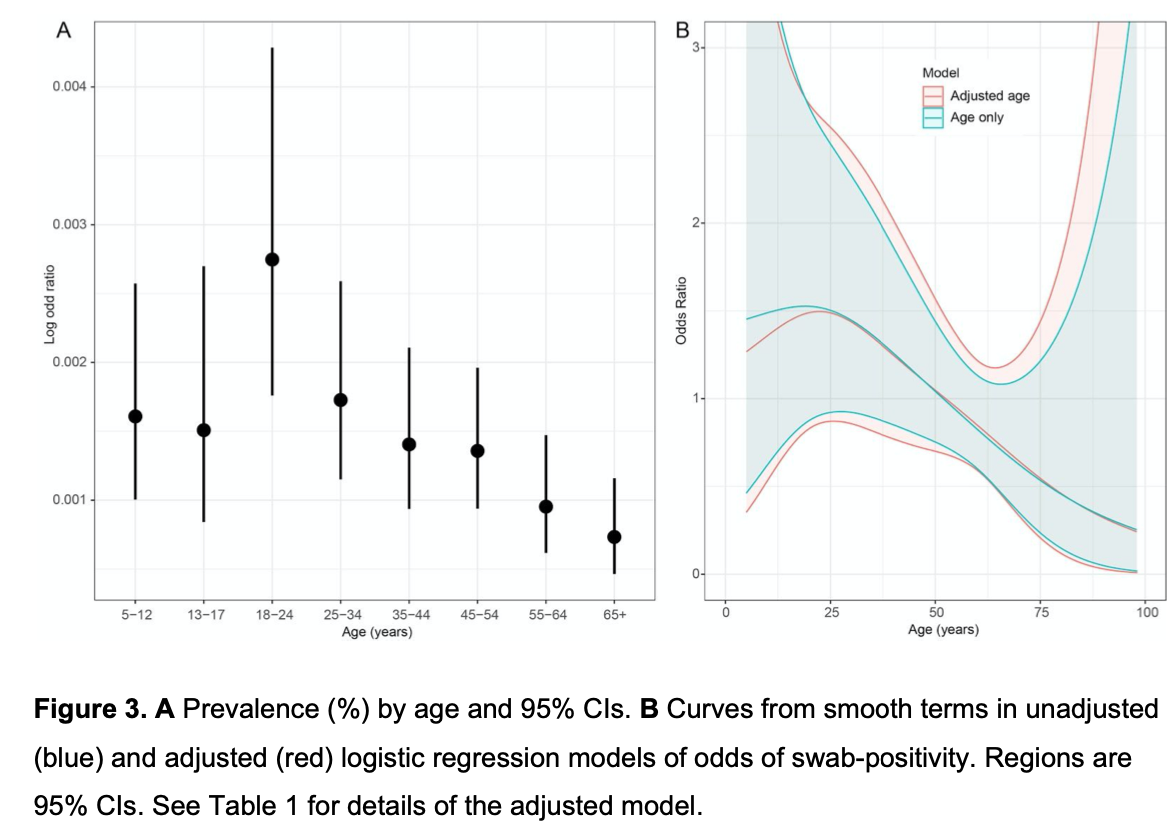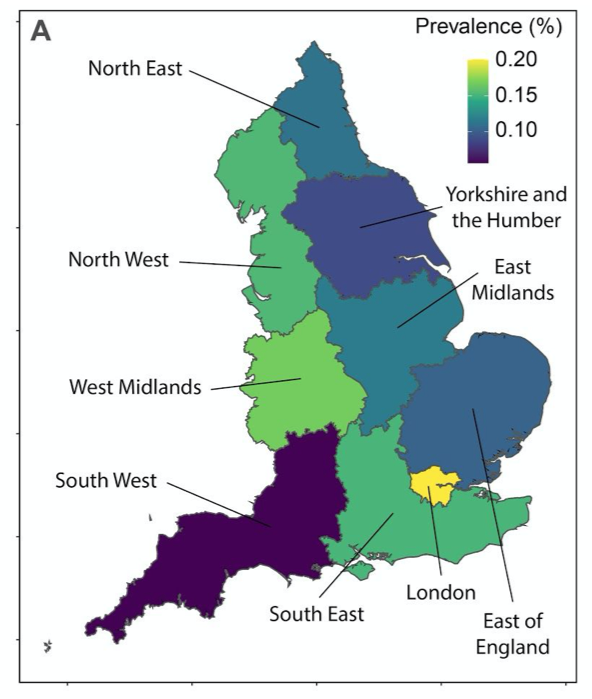Thread 1/9
First (pre-print) publication from our REACT study shows importance of community studies:
* random community sample across England n=120,610
* SARS-CoV-2 virus swab-positivity
* mean prevalence 0.13% from 1 May to 1 June 2020 https://www.medrxiv.org/content/10.1101/2020.07.10.20150524v1">https://www.medrxiv.org/content/1...
First (pre-print) publication from our REACT study shows importance of community studies:
* random community sample across England n=120,610
* SARS-CoV-2 virus swab-positivity
* mean prevalence 0.13% from 1 May to 1 June 2020 https://www.medrxiv.org/content/10.1101/2020.07.10.20150524v1">https://www.medrxiv.org/content/1...
2/9 Trend:
* decreasing prevalence over the month
* halving time 8.6 (6.2, 13.6) days
* implies R of 0.57 (0.45, 0.72)
* decreasing prevalence over the month
* halving time 8.6 (6.2, 13.6) days
* implies R of 0.57 (0.45, 0.72)
3/9 Risks:
Compared to non-key workers:
* care home workers 7.7 (1.8, 22),
* health care workers 5.2 (2.9, 9.3), &
* other key workers 1.8 (1.1, 3.1) more likely (odds ratio) to test positive
* higher prevalence Asian ethnicity 0.24% (0.13%, 0.43%)
Compared to non-key workers:
* care home workers 7.7 (1.8, 22),
* health care workers 5.2 (2.9, 9.3), &
* other key workers 1.8 (1.1, 3.1) more likely (odds ratio) to test positive
* higher prevalence Asian ethnicity 0.24% (0.13%, 0.43%)
5/9 Clinical:
* 69% (61%,76%) symptom-free for 7 days prior to testing positive
* Symptoms strongly associated with swab-positivity:
- gastro: nausea +/- vomiting, diarrhoea
- URT: blocked nose, loss of smell, loss of taste
- systemic: headache, chills, severe fatigue
* 69% (61%,76%) symptom-free for 7 days prior to testing positive
* Symptoms strongly associated with swab-positivity:
- gastro: nausea +/- vomiting, diarrhoea
- URT: blocked nose, loss of smell, loss of taste
- systemic: headache, chills, severe fatigue
6/9 Place:
* Higher prevalence in London (part confounded by to ethnicity and health care worker status)
* No evidence for geographical clustering at a sub-regional or local scale (at that time)
* Higher prevalence in London (part confounded by to ethnicity and health care worker status)
* No evidence for geographical clustering at a sub-regional or local scale (at that time)
7/9 Reflection 1
A high proportion (69%) of swab-positive people were asymptomatic in previous week. They would be missed by test and trace focused on people with symptoms/ high risk settings, therefore social distancing remains critical, plus effective contact tracing.
A high proportion (69%) of swab-positive people were asymptomatic in previous week. They would be missed by test and trace focused on people with symptoms/ high risk settings, therefore social distancing remains critical, plus effective contact tracing.
8/9 Reflection 2
Nationally-representative community surveys of SARS-CoV-2 infection can improve situational awareness as they are independent of clinical and place-based testing which varies over time and place.
Nationally-representative community surveys of SARS-CoV-2 infection can improve situational awareness as they are independent of clinical and place-based testing which varies over time and place.
9/9 Finally
Thanks to all participants for doing the swabs and survey
Thanks to @KellyIpsosMORI & team for logistics
Thanks to @DHSCgovuk for funding
Thanks to our public advisory panel @Imperial_PERC
Thanks to collaborators & investigators
@SRileyIDD @DrKAinslie @grahamscooke
Thanks to all participants for doing the swabs and survey
Thanks to @KellyIpsosMORI & team for logistics
Thanks to @DHSCgovuk for funding
Thanks to our public advisory panel @Imperial_PERC
Thanks to collaborators & investigators
@SRileyIDD @DrKAinslie @grahamscooke

 Read on Twitter
Read on Twitter



